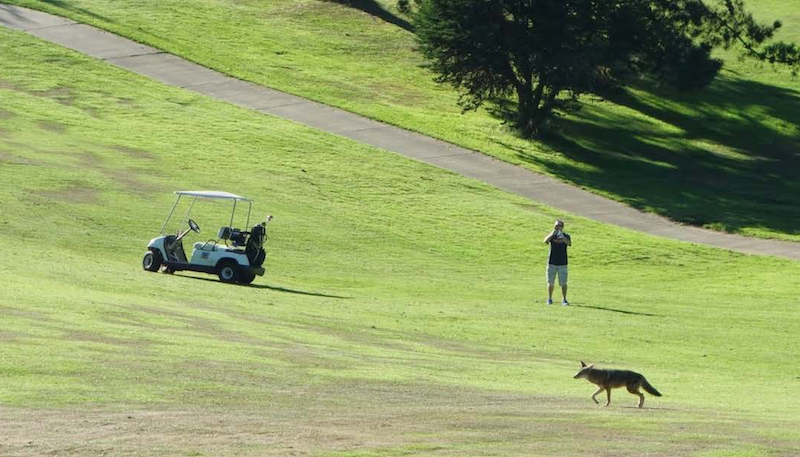Abstract
There has been growing recognition of the need to create habitat for birds and pollinators within urban centers, but more “threatening” large carnivores continue to be unplanned for. Due to human fear and a widespread belief in the fundamental difference between city and nature, most cities do not plan for intrusions by carnivores.
But carnivores have shown up anyway. As sprawl has decimated and fragmented habitats, more animals are pushed into urban and suburban areas. Without proactive management and education, negative or deadly human-carnivore encounters can push public opinion strongly against these animals. Planning for peaceful co- existence with animals that are crucial top links in food-chains becomes imperative.
Two California regions have shown especially interesting ways of accommodating carnivores. In San Francisco, native coyotes started to re-appear in the Presidio, a large urban park and former military base, in 2002. This tract of sparsely developed land has served as a denning ground and home base for many coyotes, which have been actively studied by the Presidio Trust. Shortly thereafter, other large pieces of disconnected habitat land throughout the city, including Golden Gate Park and Twin Peaks, have enabled coyotes to exist throughout the city. Signs throughout San Francisco warn of coyote presence, and literature on how to keep pets safe can be found on the Presidio’s website. This proactive management of coyotes has ensured a safe and thriving coyote population, and exciting exposure to urban wildlife for citydwellers.
Southern California’s relationship with mountain lions provides a different type of example: there, connective wildlife corridors, often fought for parcel-by-parcelhave enabled the carnivore population to continue to inhabit the mountains above Irvine, Riverside, and San Diego. A new planning method, called Natural Communities Conservation Planning (NCCP), has tried to proactively work with developers to conserve lands, with limited success.
Broadly defined, though, we can consider both cases successful, as populations of carnivores are able to subsist over time in traditionally unfriendly habitats. But while the Presidio Trust has actively managed and fostered coyote/human relationships, the Los Angeles success is tenuous as rampant development continues. Without regulatory teeth in the NCCP program, unsecured corridors could undergo conversion to development, putting in peril the informal corridors’ connections to wild areas. This case study will explore how these different approaches to carnivore populations can inform future urban habitat efforts.
